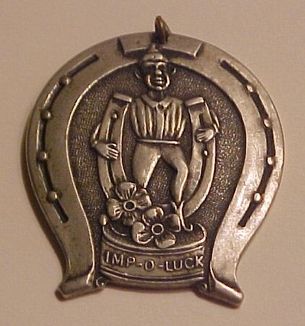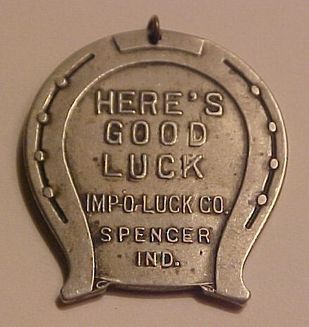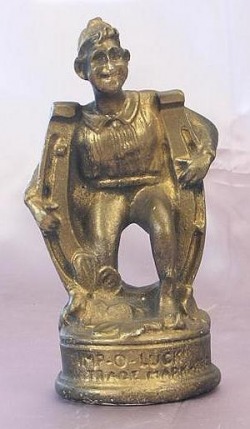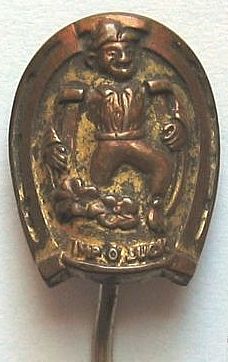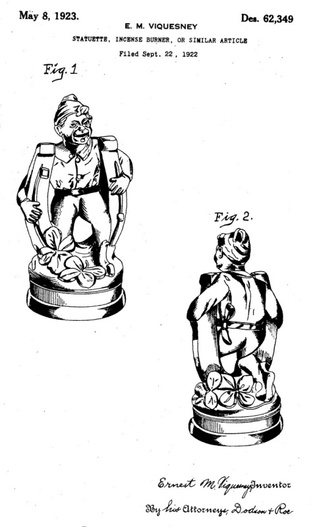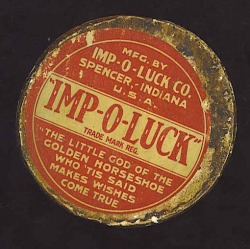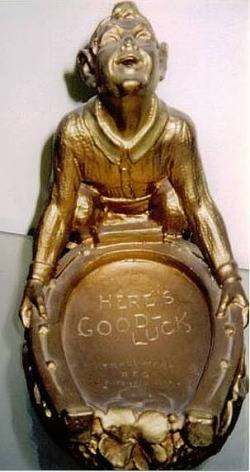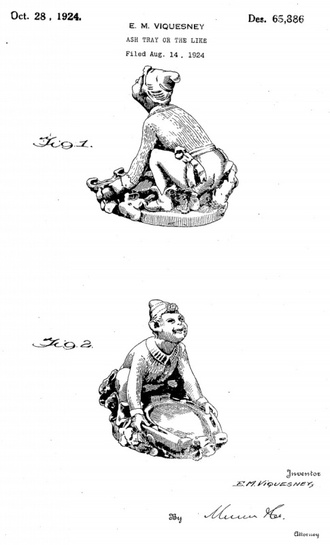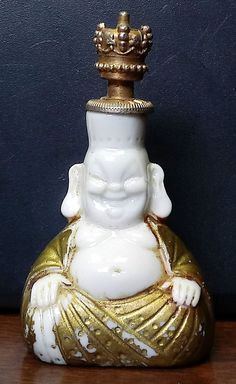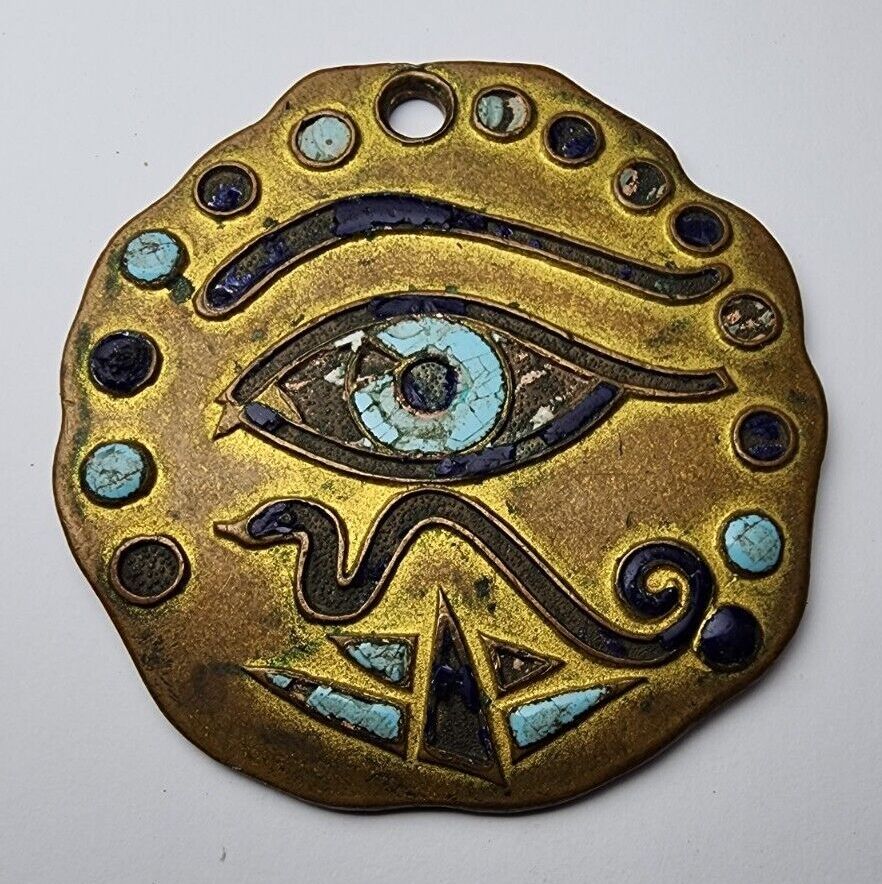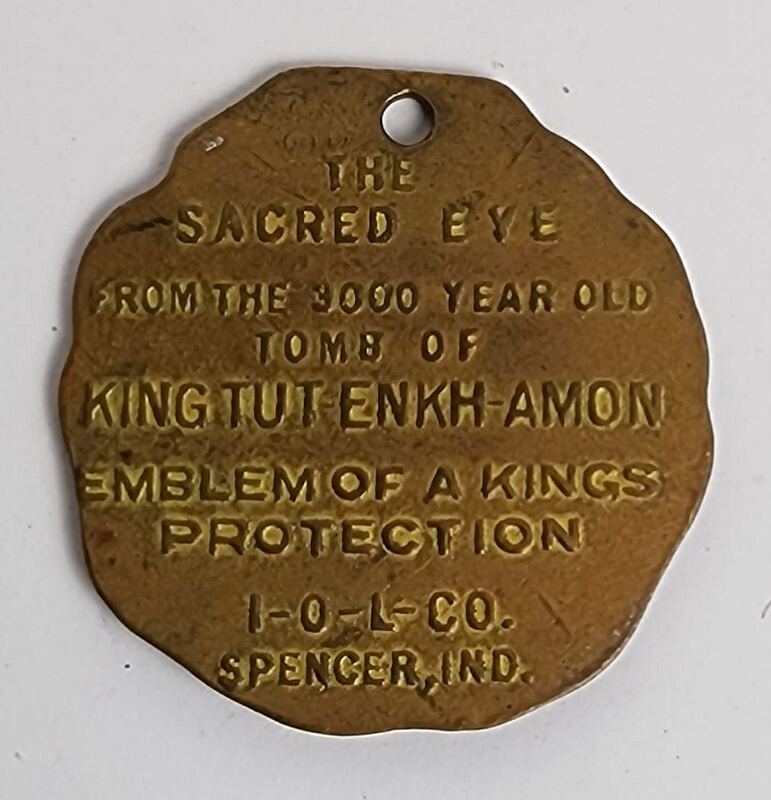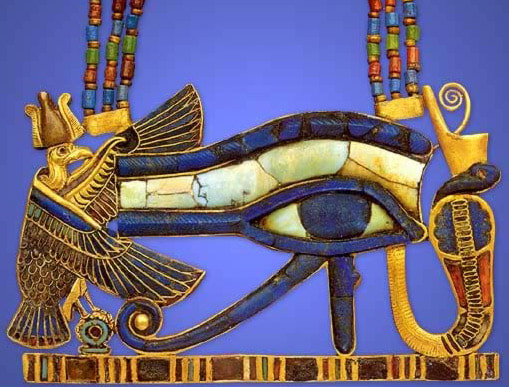THE IMP-O-LUCK COMPANY
(a.k.a. I-O-L COMPANY)
Above: Viquesney's wildly popular "Imp-O-Luck" keychain medallion. Photos: eBay.
1922 (PATENTED 1923): THE "IMP-O-LUCK"
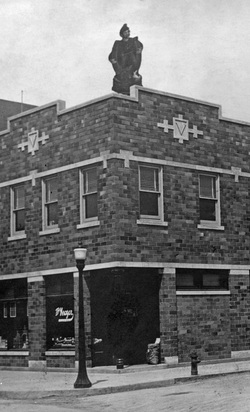
Although Viquesney's 12-inch miniature desktop Doughboy statuette sold in the thousands, Viquesney's actual best seller by far, in terms of actual unit sales, was a good-luck piece created in 1922 and patented in 1923 called the "Imp-O-Luck". It consisted of a Leprechaun-like figure surrounded by horseshoes and four-leaf clovers and came in a variety of forms, from keychain charms (above) to statuettes, tie pins, incense burners, lamps, and an expandable ring. Some of the versions are shown here. The *oxidized silver keychain piece alone sold in the "jillions", according to Viquesney researcher T. Perry Wesley. In its first full year of production (1924), the post office in Spencer, Indiana logged 100,000 parcels from the Imp-O-Luck Company. Most were the keychain piece. At 98 cents each, that was quite a haul, especially in 1920s dollars.
So successful was the "Imp-O-Luck" that as an advertising gimmick, Viquesney made an 11-foot version to stand on the roof of his downtown Spencer, Indiana studio building. It can be seen at left in a detail of a rare surviving photo provided to us by Vic Kinney, President and Museum Curator, Owen County Heritage & Culture Center. The Imp-O-Luck Company ceased production of the item sometime after May, 1929.
* "Oxidized silver" could mean any of various shiny alloys; Viquesney was notorious for stretching the truth in his ads.
So successful was the "Imp-O-Luck" that as an advertising gimmick, Viquesney made an 11-foot version to stand on the roof of his downtown Spencer, Indiana studio building. It can be seen at left in a detail of a rare surviving photo provided to us by Vic Kinney, President and Museum Curator, Owen County Heritage & Culture Center. The Imp-O-Luck Company ceased production of the item sometime after May, 1929.
* "Oxidized silver" could mean any of various shiny alloys; Viquesney was notorious for stretching the truth in his ads.
|
|
|
Above: Patent drawings for the "Imp-O-Luck statuette (left), 1923, and the 1924 ash tray version.
"CHARMEE" PERFUME BOTTLE
A related piece sold by the Imp-O-luck Company was this porcelain and metal "lucky god" figurine titled "CHARMEE". It was produced as a perfume bottle. The generic name for this type of sculpture is "Billiken". Made by many companies, it often appeared as a Buddha-like figurine and was popular from 1908 through the 1920s. "CHARMEE" apparently was Viquesney's attempt to cash in on the craze. A label on the bottom is imprinted with the Imp-O-Luck Company name, but the metal top is marked "Germany", indicating some or all components of these pieces were imported and then sold through Viquesney's company.
"THE SACRED EYE" OF KING TUT
When the tomb of King Tut was opened in November of 1922, it sparked a worldwide wave of Egypt-o-mania. Never one to miss an opportunity, Viquesney came out with this "Egyptian" protection amulet, "The Sacred Eye". It probably dates to shortly after the King Tut discovery, perhaps around 1923 or 1924.
The piece is based on the ancient Egyptian wedjat hieroglyph, or eye of Horus. It symbolizes healing and rebirth.
The piece is based on the ancient Egyptian wedjat hieroglyph, or eye of Horus. It symbolizes healing and rebirth.
For comparison, the actual eye of Horus amulet from the tomb of King Tut is shown below.
Links:
churchofgoodluck.com
churchofgoodluck.com
